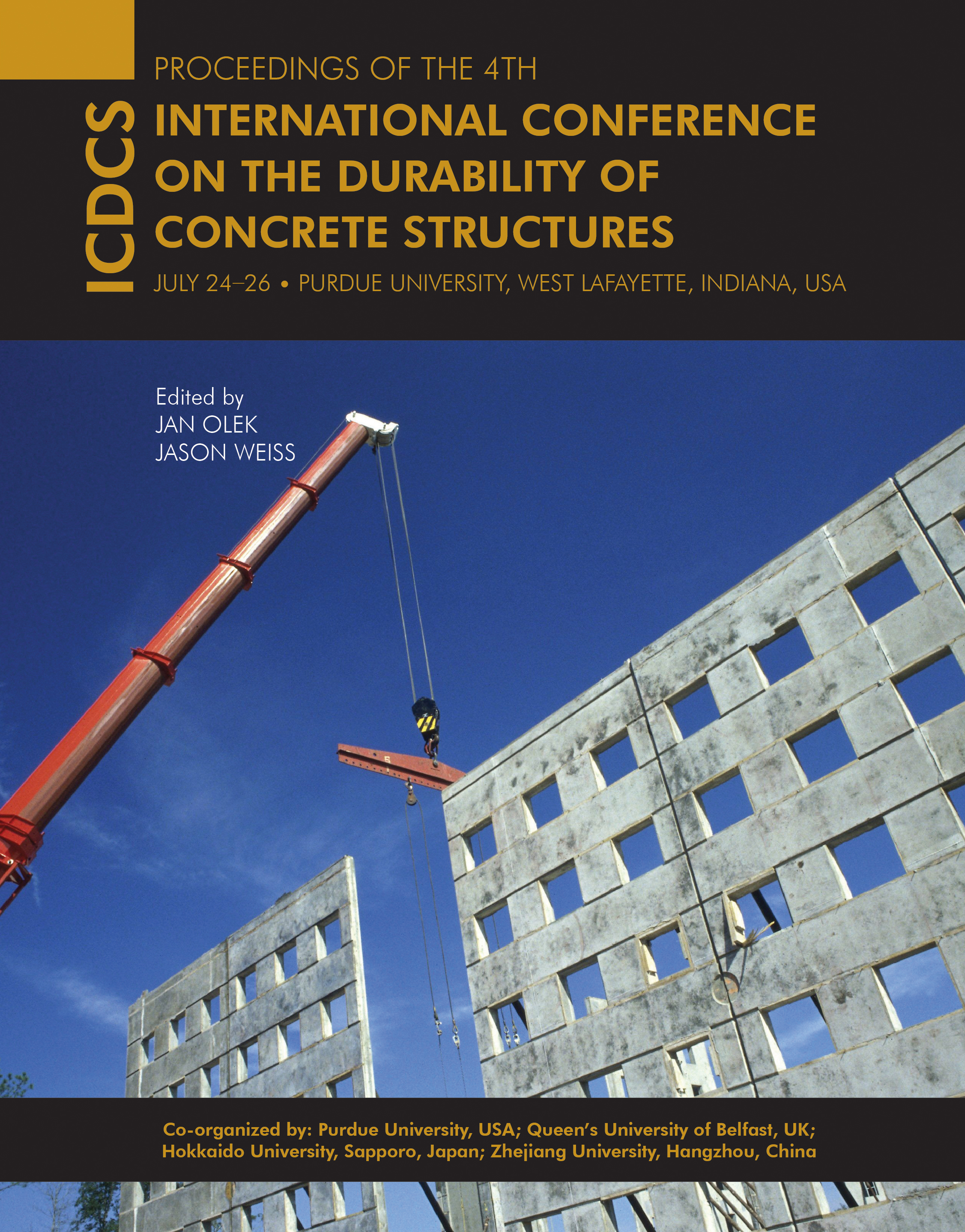Abstract
According to the report of the United Nations, it is said that two-third of world population would be influenced by water shortage before 2050. To use fresh water effectively, the usage of seawater in concrete industry seems imperative. However, the usage of seawater as concrete material is prohibited in almost all the standards or specifications around the world. In this article, the usage of seawater as a material of concrete based on the results of experimental works and deterioration prediction was discussed. Especially, the effects of by-products such as blast furnace slag or fly ash on the durability of concrete mixed with seawater were evaluated. In the experimental works, the measurements of the material diffusivity/permeability such as chloride ion diffusivity, carbonation rate, and oxygen permeability in concrete/mortar were conducted. Also, the time-dependent changes of corrosion rate of steel bar embedded in mortar were periodically measured. At the same time, immobilization ability of cement matrix and corrosion threshold chloride ion content of steel bar were evaluated. Based on the above data, the initiation and propagation periods were predicted, and the durability of concrete mixed with seawater and the effectiveness of adding by-products were discussed. Based on the results of the present article, it was said that the period before the generation of cracks due to steel corrosion in concrete mixed with seawater was almost same with that with fresh water under severe chloride attack environment. Also, it could be concluded that the addition of blast furnace slag powder or fly ash might contribute significantly to the corrosion resistance of steel bar as well as low penetrability of materials.
Date of Version
July 2014
DOI
10.5703/1288284315406
Recommended Citation
Otsuki, Nobuaki; Nishida, Takahiro; Yi, Chang; Nagata, Tomohiro; and Ohara, Hiroki, "Effect of Blast Furnace Slag Powder and Fly Ash on Durability of Concrete Mixed with Seawater" (2014). International Conference on Durability of Concrete Structures. 1.
https://docs.lib.purdue.edu/icdcs/2014/emergingbindermaterials/1
Effect of Blast Furnace Slag Powder and Fly Ash on Durability of Concrete Mixed with Seawater
According to the report of the United Nations, it is said that two-third of world population would be influenced by water shortage before 2050. To use fresh water effectively, the usage of seawater in concrete industry seems imperative. However, the usage of seawater as concrete material is prohibited in almost all the standards or specifications around the world. In this article, the usage of seawater as a material of concrete based on the results of experimental works and deterioration prediction was discussed. Especially, the effects of by-products such as blast furnace slag or fly ash on the durability of concrete mixed with seawater were evaluated. In the experimental works, the measurements of the material diffusivity/permeability such as chloride ion diffusivity, carbonation rate, and oxygen permeability in concrete/mortar were conducted. Also, the time-dependent changes of corrosion rate of steel bar embedded in mortar were periodically measured. At the same time, immobilization ability of cement matrix and corrosion threshold chloride ion content of steel bar were evaluated. Based on the above data, the initiation and propagation periods were predicted, and the durability of concrete mixed with seawater and the effectiveness of adding by-products were discussed. Based on the results of the present article, it was said that the period before the generation of cracks due to steel corrosion in concrete mixed with seawater was almost same with that with fresh water under severe chloride attack environment. Also, it could be concluded that the addition of blast furnace slag powder or fly ash might contribute significantly to the corrosion resistance of steel bar as well as low penetrability of materials.





